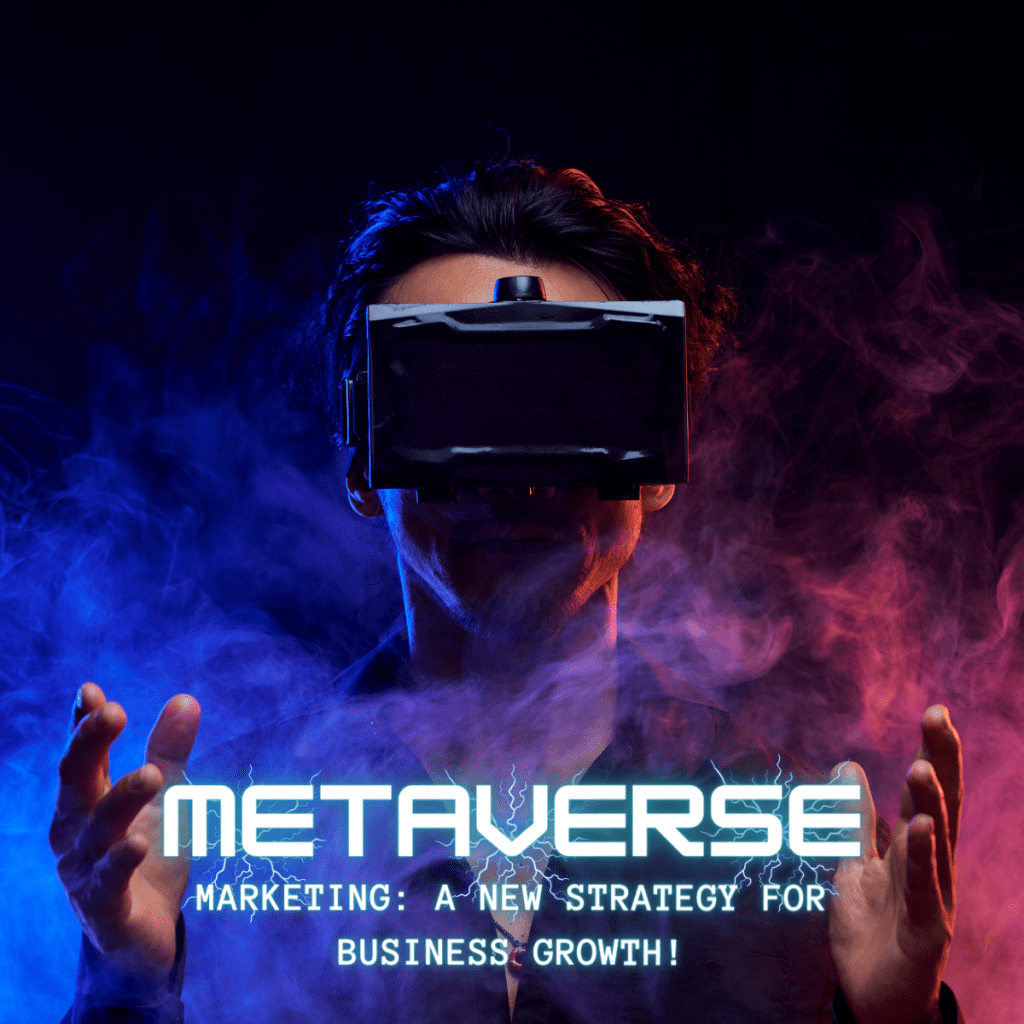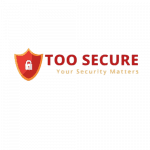Metaverse Marketing: A New Strategy for Business Growth!

Traditional advertising methods are losing their effectiveness, and brands are struggling to stay relevant in a crowded digital landscape. With technological advancement, it’s becoming harder for marketers to reach and engage with their target audience in meaningful ways.
But what if there was a solution? What if there was a fully immersive, digital environment where people could interact in real-time and experience new marketing campaigns in unique and exciting ways? That solution is Metaverse Marketing.
Explore how marketers are focusing on metaverse marketing and what strategies marketers can use to leverage the Metaverse.
What is Metaverse?
A- What is the Metaverse
The term “Metaverse” has been a buzzword in the tech industry for some time now. It refers to a virtual universe where people can interact with each other in real-time, using advanced technologies such as virtual and augmented reality.
The Metaverse is a fully immersive, digital environment that allows users to experience a wide range of experiences, including gaming, socializing, shopping, and more.
B- The Metaverse Vs NFTs
NFTs (Non-Fungible Tokens) and the metaverse are two distinct concepts in the digital world.
NFTs are unique digital assets that are verified on blockchain networks, allowing for ownership and transfer of ownership. These digital assets can be anything from artwork, music, and even tweets.
On the other hand, the metaverse is a virtual universe where users can interact with each other and digital content in real-time. It’s an immersive online world that allows users to have social experiences and explore digital environments.
While NFTs offer a new way of owning and exchanging digital assets, the metaverse offers an opportunity to engage in immersive experiences and social interactions. Therefore, although both are related to the digital world, they serve different purposes and have distinct use cases.
C- The Metaverse Vs Web 3.0
The Metaverse and Web 3.0 are closely linked concepts. The Metaverse is a virtual world that provides a shared space for people to interact in real-time.
Web 3.0 is the next evolution of the internet that promises to provide a decentralised and more secure platform for online activities. Together, these technologies could transform the way we live, work, and interact online.
How Marketers Can Leverage the Metaverse
A. Creating Virtual Experiences
One of the primary ways that marketers can leverage the metaverse is by creating virtual experiences. By doing so, they can offer consumers a unique and immersive experience that they can’t get in the real world.
This can be achieved through virtual events, such as conferences and product launches, or by creating a branded virtual world that consumers can explore.
The North Face's Virtual Reality Climbing Experience:
The North Face created a virtual reality experience where users could climb a rock face in Yosemite National Park. The experience was created in partnership with National Geographic and used real footage of the park. The campaign resulted in a 60% increase in social media engagement for The North Face.
B. Personalisation and Customisation
Another way that marketers can leverage the metaverse is by offering consumers personalised and customised experiences. By collecting data on consumer preferences and behaviour within the virtual environment, marketers can create tailored experiences that resonate with their target audience.
This can be achieved through targeted advertising, personalised product recommendations, and customised virtual environments.
Amazon's Personalised Recommendations:
Amazon uses customers’ purchase history and browsing behaviour to provide personalised product recommendations. The company reported that personalised recommendations account for 35% of its sales.
C-Integrating Social Media and User-Generated Content
Social media and user-generated content are integral components of the metaverse. Marketers can leverage these elements by creating social media campaigns that encourage users to share their experiences within the virtual environment. This can be achieved through the use of hashtags, challenges, and other social media tools that encourage user-generated content.
D. Advertising and Monetisation Strategies
Finally, marketers can monetise their presence within the metaverse through advertising and other revenue-generating strategies. This can include in-game advertising, sponsored virtual events, and virtual product placements.
E. Case Studies of Successful Metaverse Marketing
Here are some successful case studies of metaverse marketing:
i- Nike's Air Max Sneaker Drop in Roblox
A branded space in Roblox where users could explore and interact with the shoes resulted in a 30% increase in sales of the Air Max sneakers.
ii- Gucci's Virtual Sneaker Try-On Experience in Roblox
A virtual try-on experience and fashion show in Roblox led to a 20% increase in sales of Gucci sneakers.
iii- Coca-Cola's Virtual Concert in Fortnite
A virtual concert featuring Travis Scott in Fortnite resulted in over 12 million users attending.
iv- Toyota's Virtual Showroom in Second Life
A virtual showroom in Second Life resulted in a 50% increase in test drives of the Prius.
Challenges and Limitations of Metaverse Marketing
A. Technological and Infrastructure Challenges
One of the biggest challenges of metaverse marketing is the technological and infrastructure requirements. The metaverse is still in its early stages, and the technology required to create and maintain virtual environments can be complex and expensive.
In addition, infrastructure such as internet bandwidth and server capacity can be a limiting factor in the development of the metaverse.
B. Privacy and Security Concerns
Another significant challenge of metaverse marketing is the issue of privacy and security. As with any online platform, there is a risk of cyberattacks, data breaches, and other security concerns.
In addition, the collection of user data within the virtual environment raises concerns about privacy and the potential misuse of personal information.
C. Accessibility and Inclusivity Issues
Finally, there are concerns about accessibility and inclusivity within the metaverse. Some virtual environments may be inaccessible to people with disabilities or limited internet access, which could limit the potential reach of metaverse marketing.
Additionally, there are concerns about the potential for discrimination and bias within virtual environments, which could exclude certain groups of people.
The Future of Metaverse Marketing
A. Emerging Trends and Technologies
The Metaverse is a rapidly evolving space, and there are always new technologies and trends emerging. One of the biggest trends is the integration of blockchain and non-fungible tokens (NFTs) into the Metaverse.
Brands can use blockchain and NFTs to create unique digital assets that can be traded or sold within the Metaverse. This not only creates new revenue streams but also allows for greater control over digital content and ownership.
Another emerging technology is augmented reality (AR), which can be used to enhance the virtual experiences offered in the Metaverse. AR can create a seamless transition between the real and virtual worlds, allowing brands to offer immersive experiences that feel even more lifelike.
B. Predictions and Forecasts for the Future
The Metaverse is still in its early stages, but experts predict that it will continue to grow in the coming years. According to a report by GlobalData, the Metaverse market is expected to reach $280 billion by 2025. This represents a huge opportunity for marketers to tap into a new and rapidly growing market.
C. Opportunities for Marketers to Stay Ahead of the Curve
To stay ahead of the curve, marketers need to start thinking about how they can leverage the Metaverse to engage with their audiences.
This means staying up to date with the latest trends and technologies and experimenting with new ways to create immersive and engaging experiences. It also means being open to new business models and revenue streams, such as creating digital assets that can be traded within the Metaverse.
Final Thoughts on Metaverse Marketing
The Metaverse is a new and rapidly growing space that offers marketers a unique opportunity to engage with their audiences in new and innovative ways. By leveraging virtual experiences, personalization, social media, and advertising strategies, brands can create immersive experiences that drive engagement and revenue.
However, there are also significant challenges and limitations that need to be addressed, such as technological and infrastructure challenges, privacy and security concerns, and accessibility and inclusivity issues.
As the Metaverse continues to evolve, it will be important for marketers to stay up to date with the latest trends and technologies and to be open to new business models and revenue streams.
The Metaverse is not just a passing trend, but a new reality that is quickly becoming a major force in the world of marketing. Marketers who embrace the Metaverse and experiment with new ways to engage with their audiences will be well-positioned to succeed in this new and rapidly evolving space.
Grow With De Digitizers
If you’re looking to get ahead in the Metaverse, De Digitizers can help. Our team of digital marketing experts can help you develop strategies for creating virtual experiences, personalisation, social media, advertising, and more. Contact us today!





















